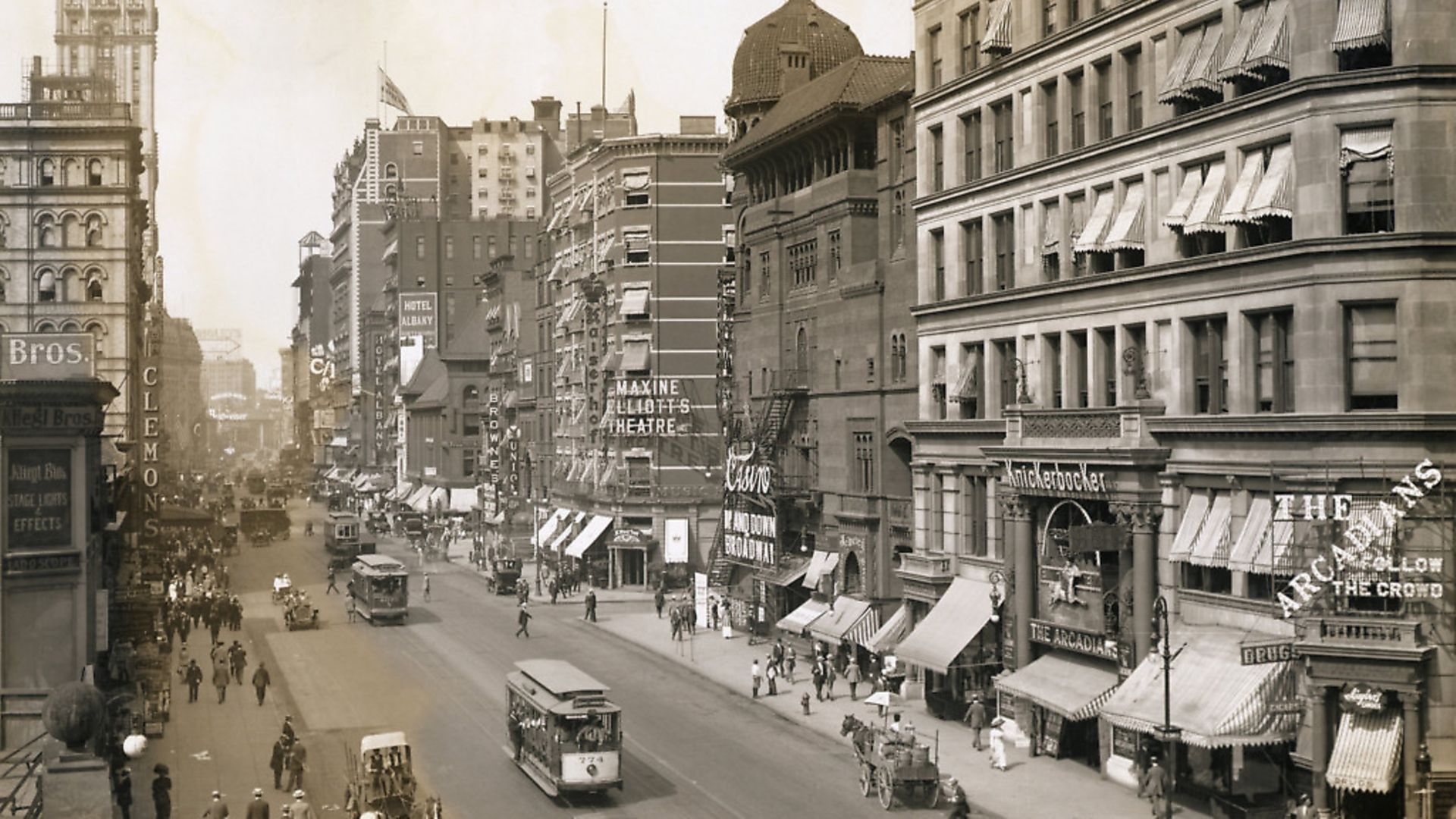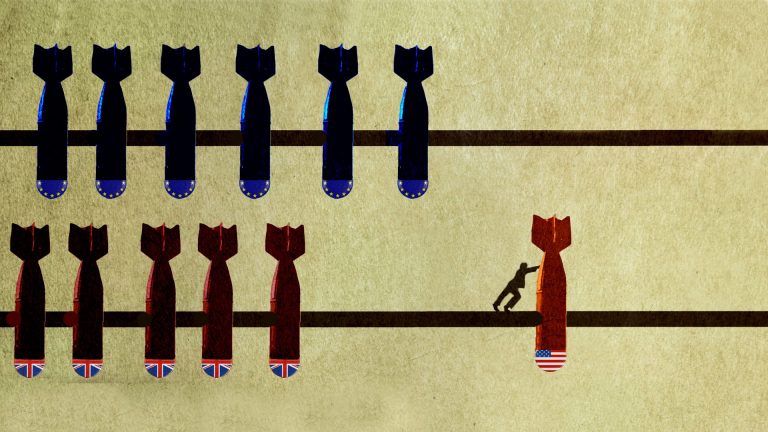
While European sounds veered towards the melancholy, and often morose, America was tuning in to something far more effervescent. SOPHIA DEBOICK reports.
The Victorian age was being left behind, but in 1904 the western world was still torn between civilized modernity and brutal primitivism. It was the era of the New Imperialism, and April’s Entente Cordiale, deftly depicted by Punch with a cartoon of Marianne jilting Kaiser Wilhelm and walking off arm in arm with John Bull, was a mutual guarantee of British and French colonial possessions as well as an alliance against an expansionist Germany.
Empire-building saw inconceivable levels of violence meted out by the European powers. British atrocities against civilians in the recent Boer War were more than matched by the horrific genocide of the Herero peoples in German South West Africa (now Namibia) that began in 1904 and the horrors detailed in Roger Casement’s report of the situation in the Belgian Congo of the same year.
But as progressive politicians and large sections of the public back home reacted with revulsion to such actions in their name, and grassroots movements for labour and political rights accelerated, society was changing and technological advancements promised a new world.
As Henry Ford launched his Model B and set a land speed record of more than 90 miles an hour in a specially customised car, back in Britain the first Rolls-Royce was unveiled and the Motor Car Act came into force, overhauling speed limits, mandating number plates and introducing drivers’ licences (available for five shillings – no test required).
Meanwhile, the music of the year vacillated between gregarious self-congratulation and the exploration of the deepest experiences of the soul, in an era when Broadway as we know it was being born and classical pieces destined to be as well-known as pop songs were debuted.
While in London’s theatreland there was a sense of earnestness – Peter Pan; or, the Boy Who Wouldn’t Grow Up premiered at the Duke of York’s Theatre in December, hiding its existential themes behind the guise of a children’s play, while Herbert Beerbohm Tree founded the worthy Royal Academy of Dramatic Art at His Majesty’s Theatre – on Broadway, brashness was the watchword.
George M. Cohan was the ultimate all-American character who came to define the spirit of Broadway in its early years. Making appearances in his family’s successful vaudeville act almost from birth, Cohan had travelled the length and breadth of the country, and by the time he turned his hand to song-writing he had an intimate knowledge of the soul of America.
Then 1904 saw Cohan use his understanding of the patriotic spirit that seemed to unite all Americans, even the millions of very recent immigrants, to break through with a Broadway show which was dripping in nationalistic sentiment. Little Johnny Jones, the story of an American jockey going to England to ride in the Derby, based on the real-life case of Tod Sloan who rode for King Edward in 1901, opened at the Liberty Theatre in November and contained two notable hits: Give My Regards to Broadway and The Yankee Doodle Boy.
While the former name-checked New York legends like the Waldorf Hotel and Coney Island, the latter proclaimed “I’m a Yankee Doodle dandy/ A Yankee Doodle do or die/ A real live nephew/ Of my Uncle Sam’s/ Born on the Fourth of July”.
Both would be No.1 hits on Columbia for singing star Billy Murray in 1905 (Murray kicked off his career in earnest in 1904, scoring his first No.1s, and his Meet Me in St. Louis, Louis, celebrating the St. Louis World’s Fair, was one of the biggest hits of the year).
Cohan penetrated the American psyche with his song-writing. From Mary’s a Grand Old Name to Forty-Five Minutes From Broadway, his songs captured the confidence of America in the early years of the new century. And even as that century looked to be one characterised by war, Cohan still had his finger on the pulse, penning Over There in 1917 as the US entered the First World War. Recorded by Nora Bayes, Enrico Caruso, Billy Murray and Cohan himself, it was so recognised as a recruiting song (“Johnnie show the Hun you’re a son of a gun”), that in 1940 he was awarded a Congressional Gold Medal for it and 1906’s equally rousing You’re a Grand Old Flag.
In 1942, Over There would be revived just as America entered another European war, as James Cagney played Cohan in an Oscar-winning performance in the all-singing, all-dancing biopic Yankee Doodle Dandy.
Despite a statue of Cohan being erected on Times Square and the US Postal Service issuing a stamp for the centenary of his birth, the hit film was the ultimate tribute to the songwriter, praising him as “The whole darn country squeezed into one pair of pants”, and claiming “He took the heartbeat of a nation and set it to music”. In contributing to American myth-building at a pivotal time in its history, Cohan made an indelible mark on the popular culture of his nation.
While Broadway was a riot of self-celebratory colour, in the classical world some of the most emotionally affecting compositions ever heard were premiered. Mahler had worked on the last of his Kindertotenlieder (‘Songs on the Death of Children’) that summer, setting to music Friedrich Rückert’s gut-wrenching poems on the loss of his son and daughter to scarlet fever.
Alma Mahler prophetically protested at his taking up this morbid theme just weeks after the birth of their second child, Maria – who tragically would die of that same illness four years later. As heartrending as the content of the Kindertotenlieder was, particularly given the later context, Mahler’s most emotionally powerful piece appeared later in the year, premiered in Cologne in October 1904.
The Adagietto, the fourth movement of Mahler’s Fifth Symphony, has gained an association with death, having been performed at the funeral of Bobby Kennedy in 1968 and featuring prominently in Luchino Visconti’s Death in Venice (1971). Yet the symphony was written during the period that Mahler met and married Alma, and evidence suggests it was his love letter to her.
While Mahler gave the direction sehr langsam (‘very slow’) for the piece, it is often performed far slower than he himself conducted it, giving it an excessively melancholy feel which inaccurately dampens the parts of the composition that unquestionably soar with romantic exhilaration.
By the time Mahler’s piece was premiered, Puccini’s Madama Butterfly had already debuted, performed at Milan’s La Scala in February, but it had been four years in gestation. Despite the now legendary status of this operatic tale of innocence betrayed, and in particular the breath-taking drama of its most famous aria, Un bel dì vedremo (‘One fine day we shall see’) – a song of almost unbearable yearning for an absent love – it received a poor reception.
Puccini hastily rewrote what was originally a two-act piece, and a three-act version was premiered in Brescia in May to far warmer reviews, although he revised it further in following years, and it is the fifth version that is now canonical.
For all the unmatchable excitement of live performance, the works of Puccini were finding new audiences as the recording age gathered pace. Dame Nellie Melba, then in her forties, made a number of recordings in London on HMV parent company Gramophone Company Limited that year, with selections including parts of Puccini’s La bohème, as well as Verdi’s La traviata and Rigoletto. Although the recordings are of poor quality, they capture the astonishing soprano voice with which Melba had made her name in the 1880s and 1890s.
As Kaiser Wilhelm, already a larger-than-life figure, made the first political recording in March 1904, using an Edison wax cylinder, the future of politics in an age of mass communication could be glimpsed.
In a rapidly-changing world, recording technology would be of huge importance far beyond the realms of music, and as a war of unprecedented carnage lay only a decade away and new world powers rose, the nationalistic fervour of Cohan’s songs on one hand, and the universal emotions that had been captured by Mahler and Puccini on the other, would gain new relevance.









